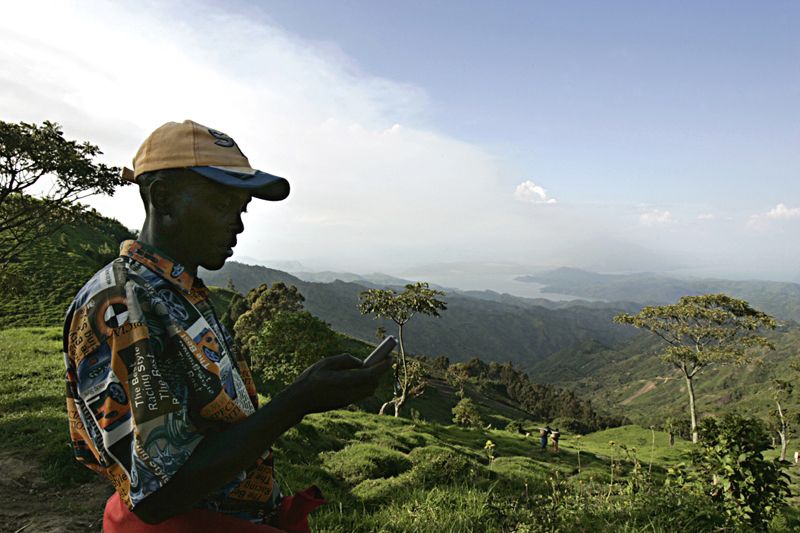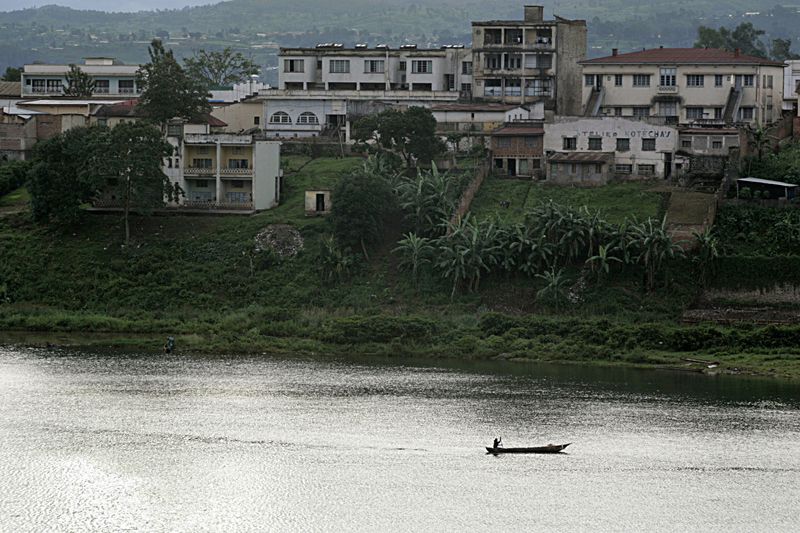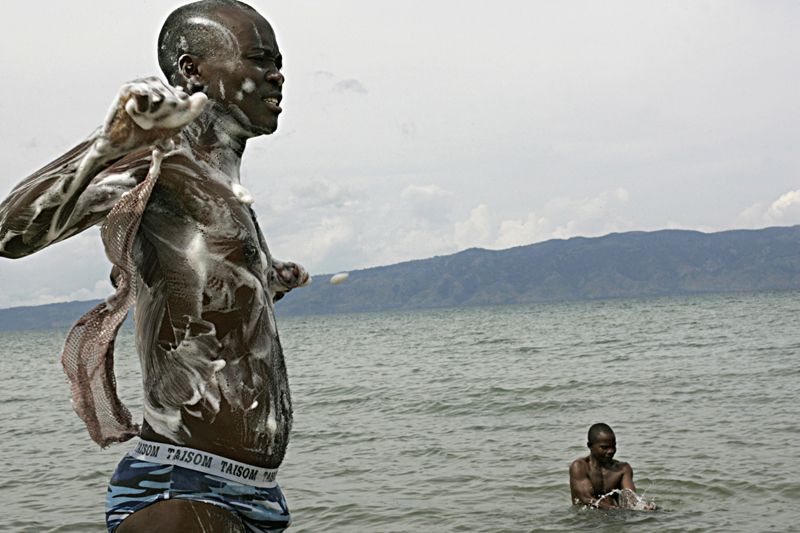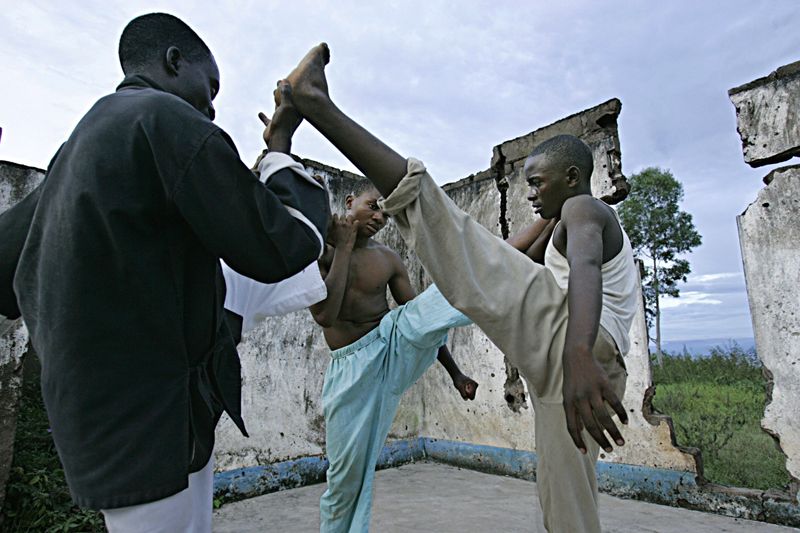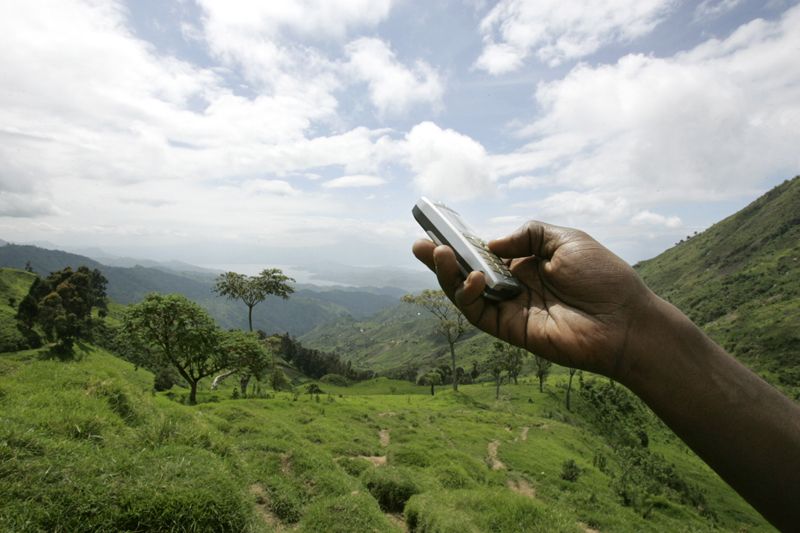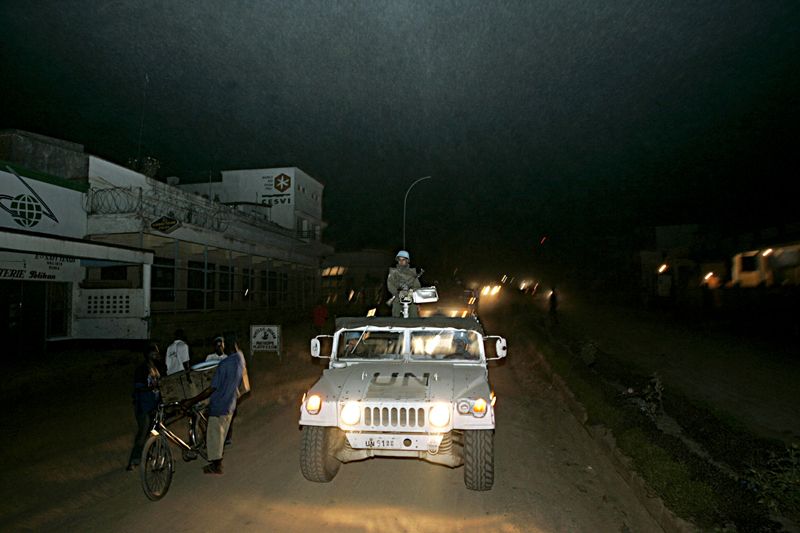September 02, 2006 | Pulitzer Center
These images represent a view of general daily life mixed with views of people using cellular phones. It's not just the outside world that plays a role in this tragedy: perhaps unaware of the damages caused by the coltan and tin booms, locals are also responsible. Whoever can afford a mobile phone in eastern DR Congo doesn't lose the chance to have one. People roam the streets talking on their mobiles brought into the country by the South African communications enterprise, Vodacom, or by the Rwandan company Celtel. Rwanda is believed to be behind most of the illegal trade of cassiterites, and Uganda is believed to be responsible for most of the gold smuggling out of the DRC.


